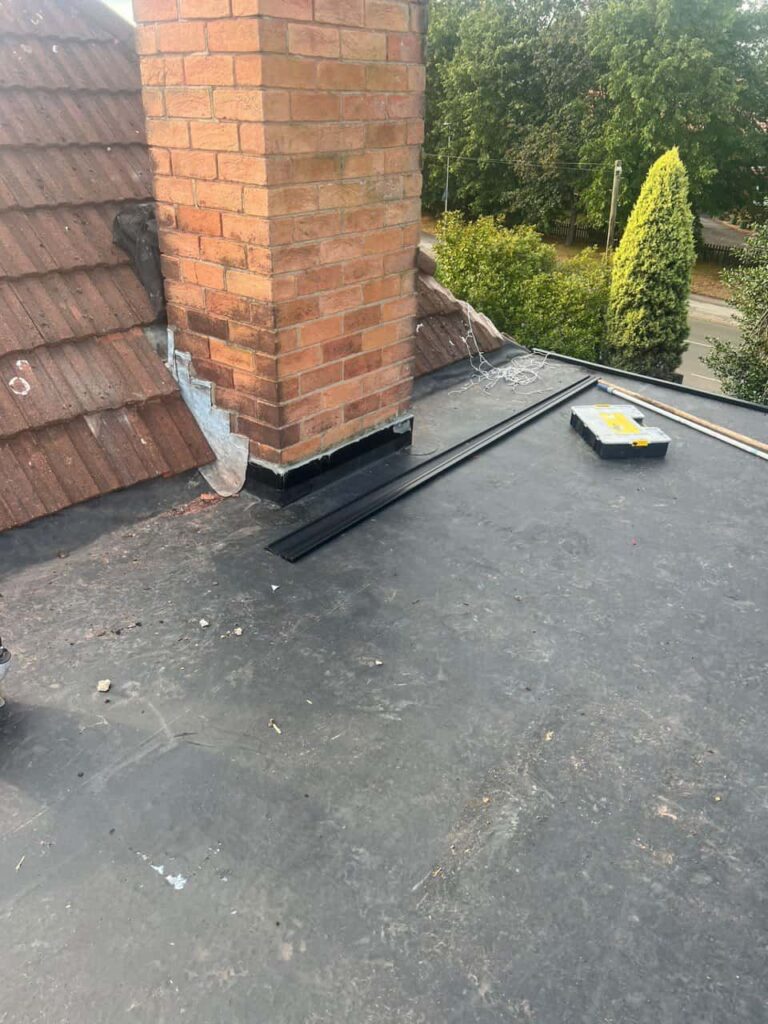Roof condensation is a common issue for many homeowners in the UK, particularly due to the damp and fluctuating weather conditions. While condensation may seem like a minor inconvenience, if left unchecked, it can lead to significant problems such as mould growth, structural damage, and reduced energy efficiency. At Shirebrook Roofing Repairs, we understand the challenges posed by the UK climate and the importance of maintaining a dry, well-ventilated roof. In this blog post, we’ll explore how to tackle roof condensation and protect your home from potential damage.
What Causes Roof Condensation?
Roof condensation occurs when warm, moist air from inside the home meets the cold surface of the roof, causing the moisture to condense into water droplets. This is particularly common in the colder months, when the temperature difference between the inside and outside of the house is greater. Key factors that contribute to roof condensation include:
- Poor Ventilation: Inadequate airflow in the loft or attic can trap moist air, leading to condensation.
- Insufficient Insulation: Without proper insulation, warm air from the house can rise and come into direct contact with the cold roof surface, resulting in condensation.
- High Indoor Humidity: Activities like cooking, showering, and drying clothes indoors can increase the amount of moisture in the air, raising the likelihood of condensation forming in the roof space.
The Problems with Roof Condensation
While condensation might not seem like an urgent issue, it can lead to serious consequences if not addressed. Some of the potential problems include:
- Mould and Mildew: Persistent condensation creates a damp environment that encourages the growth of mould and mildew. This not only damages your roof and insulation but can also affect your indoor air quality, leading to health issues such as allergies and respiratory problems.
- Structural Damage: Over time, excessive moisture can cause timber rafters and beams to rot, weakening the structure of your roof. This can lead to expensive repairs or even the need for a full roof replacement.
- Reduced Energy Efficiency: Condensation can damage your roof’s insulation, making it less effective at keeping your home warm. This results in higher energy bills as your heating system works harder to maintain a comfortable temperature.
How to Prevent and Address Roof Condensation
Preventing and tackling roof condensation requires a combination of proper ventilation, insulation, and moisture management. Here are some effective strategies to help you address the problem:
1. Improve Roof Ventilation
Proper ventilation is one of the most important factors in preventing roof condensation. Ensuring that air can circulate freely in your loft or attic space helps to reduce moisture build-up. There are several ways to improve ventilation in your roof space:
- Install roof vents: Roof vents allow fresh air to enter and exit the roof space, promoting airflow and reducing condensation.
- Soffit and ridge vents: These vents, installed at the eaves and along the roof’s ridge, provide continuous airflow across the roof space, helping to prevent moisture accumulation.
- Loft ventilation fans: For properties with high humidity levels, installing a loft ventilation fan can help to extract moist air from the roof space.
2. Check Your Roof Insulation
Proper insulation plays a key role in controlling roof condensation. Insulation helps to prevent warm air from rising into the roof space and coming into contact with cold surfaces. Ensure that your insulation is adequate and evenly distributed. Insulation that’s too thin or poorly installed can allow heat to escape, increasing the risk of condensation.
At Shirebrook Roofing Repairs, we can assess your insulation to ensure it meets current standards and recommend upgrades if necessary.
3. Use a Vapour Barrier
A vapour barrier is a protective layer that prevents moisture from inside the home from rising into the roof space. This can be especially useful in rooms directly beneath the roof, such as loft conversions. Installing a vapour barrier in conjunction with insulation helps to control the flow of moisture and reduce condensation risks.
4. Manage Indoor Humidity
One of the simplest ways to reduce condensation in your roof is by managing the humidity levels inside your home. Here are a few tips to lower humidity:
- Use extractor fans in bathrooms and kitchens to remove steam and moist air from these areas.
- Dry clothes outdoors whenever possible or use a tumble dryer that is vented to the outside.
- Consider a dehumidifier if your home has consistently high humidity levels, particularly in the colder months.
5. Regular Roof Inspections
Scheduling regular roof inspections can help you identify any potential issues with condensation before they become serious. At Shirebrook Roofing Repairs, our experienced team can assess your roof for signs of condensation, leaks, or inadequate ventilation, and recommend appropriate solutions.
By identifying and addressing condensation issues early, you can prevent more costly damage in the future.
Conclusion
Roof condensation is a common but preventable problem for many UK homeowners. By improving ventilation, ensuring proper insulation, and managing indoor humidity levels, you can significantly reduce the risk of condensation damaging your roof and home. If you’re concerned about roof condensation or need advice on how to protect your property, contact Shirebrook Roofing Repairs today. Our expert team in Shirebrook, Derbyshire, is here to help you maintain a healthy, dry, and well-functioning roof, ensuring long-term protection for your home.
Call us on: 01623 701 195
Click here to find out more about Shirebrook Roofing Repairs
Click here to complete our contact form and see how we can help with your roofing needs.

